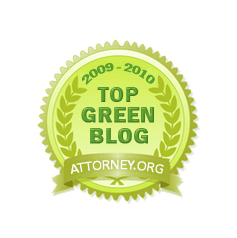- define tools and actions to restore water quality and describe changes to be made to regulations, programs, and policies to implement these actions (EPA);
- target resources to better protect the Bay and its tributaries, including resources under the Food Security Act of 1985 as amended, the Clean Water Act, and other laws (USDA);
- strengthen storm water management practices at Federal facilities and on Federal lands within the Chesapeake Bay watershed and develop storm water best practices guidance (DOD, EPA);
- assess climate change impacts on the water quality and living resources of the Bay and develop strategy for adapting natural resource programs and public infrastructure to those impacts (DOI, DOC);
- expand public access to waters and open spaces of the Chesapeake Bay and its tributaries from Federal lands and conserve the landscapes and ecosystems of the Chesapeake Bay watershed (DOI);
- strengthen scientific support for decisionmaking to restore the Bay and its watershed, including expanded environmental research and monitoring and observing systems (DOI, DOC); and
- develop coordinated habitat and research activities to protect and restore the Bay's living resources and water quality. (DOI, DOC).
Notable components of the plan include: new EPA efforts to control runoff from Concentrated Animal Feeding Operations (CAFO) (a major source of nitrogen from chicken and other animal waste), as well as urban and suburban runoff; a revitalization of efforts to recover native oyster reefs and establish self-sustaining native oyster reef sanctuaries by 2020; and the establishment of a Chesapeake Conservation Corps made up of ordinary citizens. The EPA efforts will be helped along by $19 million in increased funding from Congress to "support additional regulatory and accountability programs to control urban, suburban and agricultural runoff in the watershed." (You can read a Chesapeake Bay Foundation press release about the funding here.)
Already, Maryland officials have voiced concerns about the potential impact of tightened regulations on the state's poultry industry, as you can read in this Baltimore Sun article. Indeed, any EPA effort to control runoff from major chicken operations will involve new costs, since operators of huge chicken operations, in which chickens are confined by the hundreds or thousands in large barns, simply let the waste drain into ground and surface water, and ultimately into the Bay. (This Frontline segment shows some fairly stark footage of the phenomenon.) In the event, this probably won't be a terribly difficult transition for these farmers to manage, monetarily--though it will take a little work. Chickens raised in more traditional circumstances don't pose the same problem, as their (more disperse) waste is absorbed back into the soil easily and is, indeed, beneficial. And if the chicken CAFO operators sold their guano to fertilizer manufacturers, most of the runoff problem would dissipate.
The Draft Strategy--which will be open to comment for 90 days--can be read here. The USDA press release can be read here. And an earlier post on EPA efforts to work with surrounding states to develop mandatory Watershed Implementation Plans (WIPs) to control runoff into the Bay can be read here.





No comments:
Post a Comment